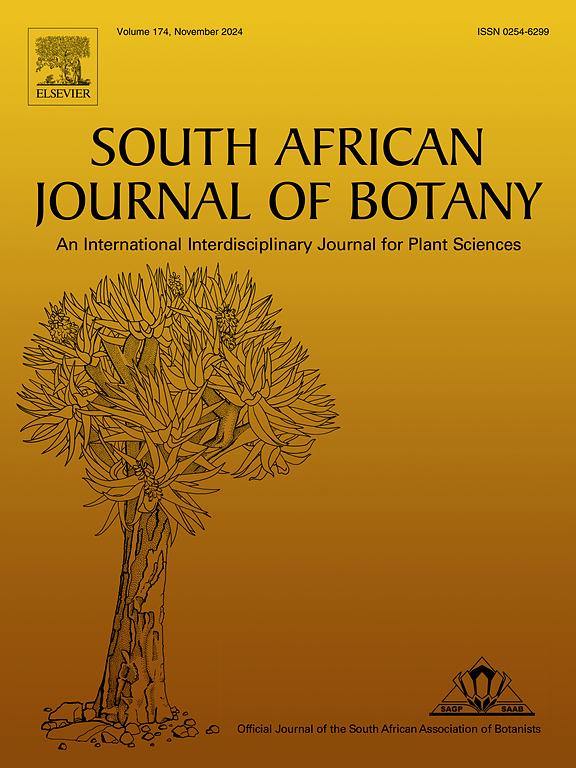Diversity and dynamics of southern African medicinal and ritual plant use
IF 2.7
3区 生物学
Q2 PLANT SCIENCES
引用次数: 0
Abstract
Research on medicinal and ritual plants (the latter hitherto referred to in the literature as “magic plants”) in southern Africa has substantially increased since the last checklist was published in 2002. This study analyses an updated checklist published in 2024 to provide an overview of the current state of knowledge regarding eight southern African medicinal systems. It also examines the process of recording indigenous knowledge and how the knowledge content has changed in the past two decades. The increasing number of new ethnobotanical inventories from indigenous researchers conducting interviews in languages other than English is noteworthy. The reference list of each taxon was used to create a documentation timeline of medicinal and ritual plant species in RStudio. Taxa were categorised according to biomes by using QGIS. The results showed a total of 3640 medicinal species, 1055 ritual species and 911 species with dual medicinal and ritual use. The numbers of exotic plant species used in traditional medicinal systems in the region have increased uniformly over time, proving that the medicinal systems in southern Africa are adaptable and dynamic. Distinct differences are noticeable between the diversity of plants used in various cultures in southern Africa. Proportionally, the Indian Ocean Belt Biome has the highest number of medicinal and ritual plant species, whereas the Fynbos Biome has the lowest. The gradient of the timeline of new species records for each year shows no signs of reaching a turning point, indicating that much work remains to create a more comprehensive inventory of the fragile oral-traditional knowledge of the various cultural groups of southern Africa.

求助全文
约1分钟内获得全文
求助全文
来源期刊

South African Journal of Botany
生物-植物科学
CiteScore
5.20
自引率
9.70%
发文量
709
审稿时长
61 days
期刊介绍:
The South African Journal of Botany publishes original papers that deal with the classification, biodiversity, morphology, physiology, molecular biology, ecology, biotechnology, ethnobotany and other botanically related aspects of species that are of importance to southern Africa. Manuscripts dealing with significant new findings on other species of the world and general botanical principles will also be considered and are encouraged.
 求助内容:
求助内容: 应助结果提醒方式:
应助结果提醒方式:


